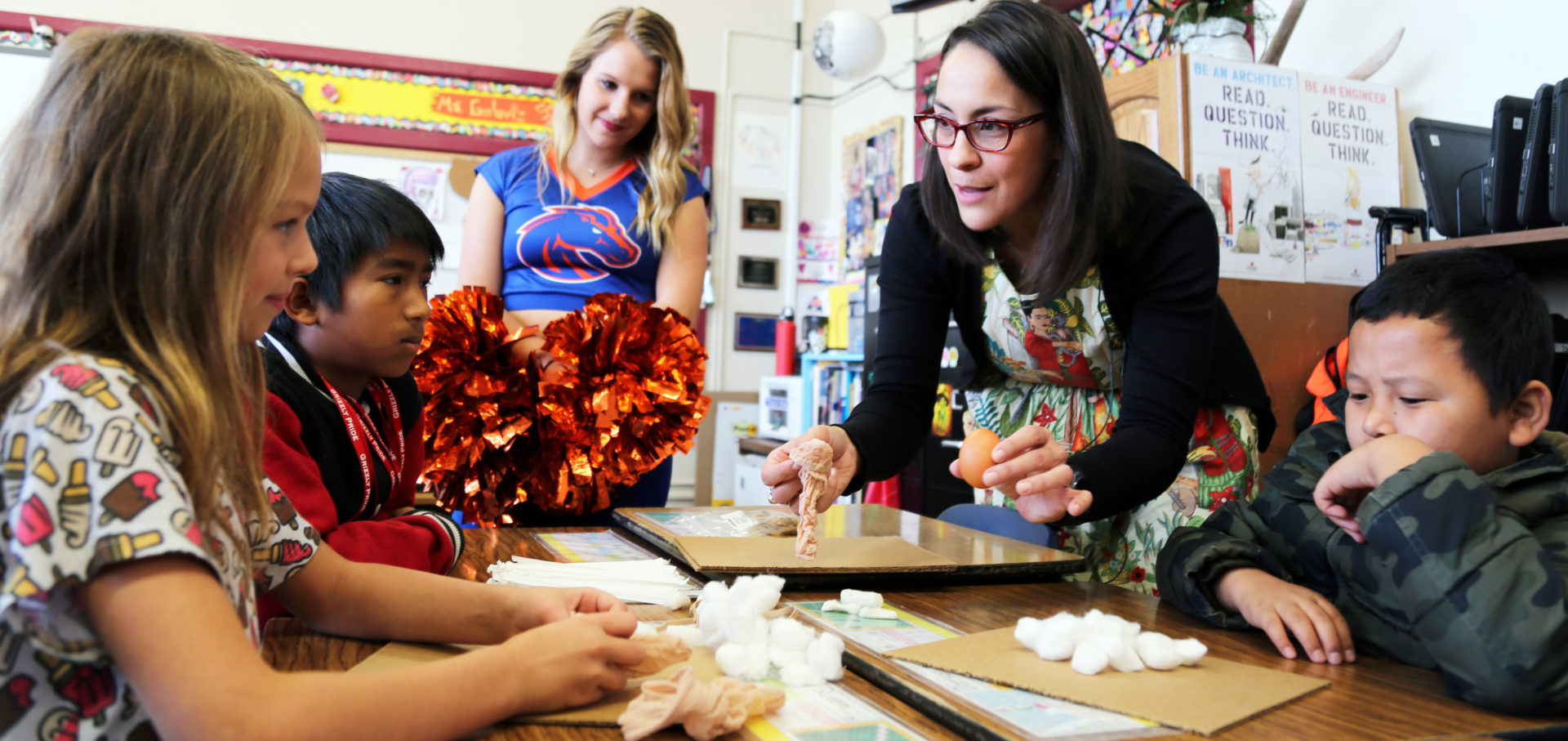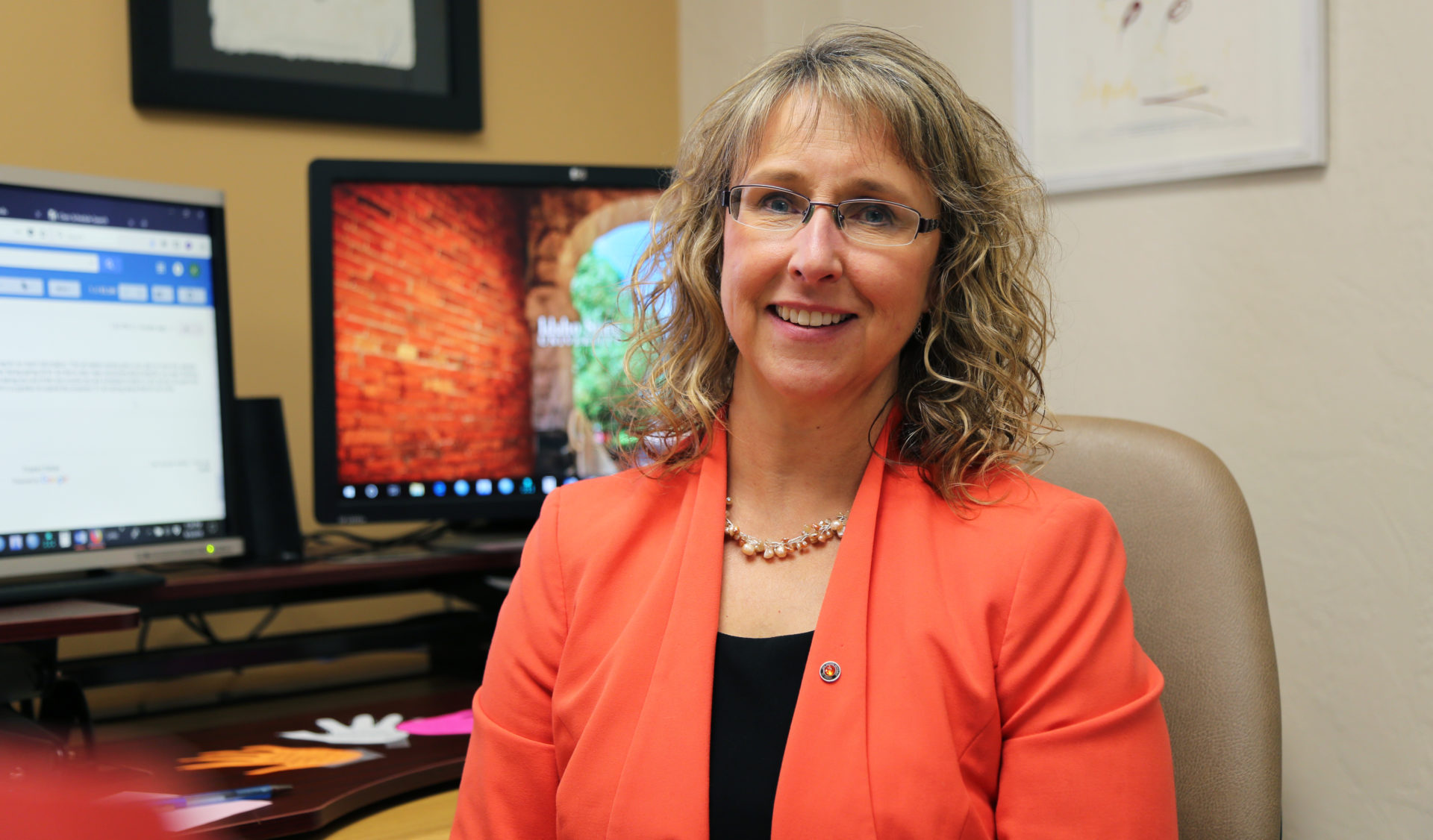Maybe we shouldn’t be surprised.
Maybe it makes sense that Idaho has made little progress in an eight-year campaign to convince more high school graduates to continue their education.
 Idaho is trying to create new family histories and establish new community beliefs. Minds and mindsets change slowly. This is no eight-year job. It’s a generational challenge. Student by student, household by household.
Idaho is trying to create new family histories and establish new community beliefs. Minds and mindsets change slowly. This is no eight-year job. It’s a generational challenge. Student by student, household by household.
This campaign has an informal name and a concrete number: the “60 percent goal.” Numbers make for handy political shorthand. This number defines a target, while trivializing the challenge.
Stagnant numbers
The numbers can be confusing. But they point in the same troubling direction.
The 60 percent goal. This has been the State Board of Education’s benchmark since 2010. The state wants 60 percent of 25- to 34-year-old to complete some form of education beyond high school. That can mean a college degree or a professional certificate.
Idaho wants to get here by 2025. The postsecondary completion number is stuck at 42 percent.
The “go-on” rate. Not synonymous, but related. This counts the students who go straight from high school to college. Plenty of variables drive down this number; it makes no allowance for students who enlist in the military or serve a church mission.
But this number is stagnant as well, at 45 percent.
A deeper dive suggests a deeper issue. Across much of Idaho, many students and parents simply consider college unaffordable or unnecessary.
- In Idaho’s poorest school districts, where more than 60 percent of students quality for free or reduced-price lunch, the go-on rate falls to 41 percent.
- In Idaho’s smallest high schools — non-charter schools, mostly in rural communities, with 50 or fewer graduates — the number tumbles to 37 percent.
The idea of college resonates with students in cities such as Boise or Coeur d’Alene, says Brad Baumberger, a former teacher at Boise’s Borah High School, who now teaches career-technical courses at rural Payette High School. With many students and parents in small towns, thoughts turn to the prospect of loan debt.
“You’re dealing with a state where the vast majority of people have been successful without a college degree,” he said.
‘Every step I was going was in a new territory’
When the Idaho Commission on Hispanic Affairs decided to hold its first-ever summit in Twin Falls for Latino high school students, Manuel Garcia signed up to speak.
The College of Southern Idaho student is committed to encouraging more fellow Hispanic students to attend college. So he signed up to lead a series of group discussions about the transition from high school to college. He didn’t spend much time talking scholarships: “People can look that up,” he’d say in an interview a few days later. Instead, he focused on self-discipline and handling the stress of more demanding assignments.

Garcia’s mother never made it to middle school. His father didn’t go to school at all. Garcia is quick to say he grew up in a good environment, and he received a lot of good advice along the way. But he said it would have been nice to have a role model. “Every step I was going was in a new territory.”
Garcia’s story is retold, time and time again. And time and time again, this story also becomes a call to action.
When Cesar Perez was growing up, he would listen to his friends and their parents talk about college. Back at home, the conversations were different — and focused on getting a job. His father had a sixth-grade education. He said his parents set foot on college campuses only three times.
“That was the three times I graduated from college.”
Perez is now CSI’s Hispanic liaison, focused on Jerome and Gooding counties, rural areas north and west of CSI’s Twin Falls campus, where nearly a third of the population is Hispanic. In these communities — and often in bilingual events — Perez spends much of his time reaching out to parents who might not be aware that their children can earn college credits while in high school, with the state picking up the tab.
Sonia Galaviz is the daughter of an Arizona migrant worker who finished eighth grade. She is now an award-winning teacher at Boise’s Garfield Elementary School, a Title I school where about 360 students come from 24 countries and speak 17 languages. At a recent Idaho Business for Education conference, Galaviz spoke of one language, a “language of opportunity.” She urged a room full of educators and decisionmakers, including retiring Gov. Butch Otter, to invest heavily in the STEM disciplines of science, technology, engineering and math, in order to bridge deep-seated socioeconomic gaps.

Michelle Aragon’s family worked in trades when they settled in Jerome. She went to a University of Idaho informational session, at first figuring she would kill a little time, but something clicked.
She decided to pursue college, but as a first-generation college student, she had to figure out financial aid for herself. She graduated high school in 1993 — before students could go on the Internet to sort out financial aid, she says wryly.
“I struggled a lot, and unnecessarily so,” she said.
Caminos al Futuro
A quarter century later, Aragon is determined to help today’s students find a smoother path.
Aragon is a senior vice president for MAGNA Global, a New York City marketing and strategic intelligence firm. But she came back to Jerome in August, joined by University of Idaho president Chuck Staben, to talk to eighth- and ninth-graders.
They were there to help launch year two of Caminos Al Futuro (Paths to the Future) a pilot project for Hispanic students. Students get an introduction to the STEM disciplines of science, technology, engineering and math. They get some basic instruction in health — learning how to make simple but nourishing meals for their younger siblings. Students and parents also learn about college — and like Aragon a generation ago, they are starting from ground zero.
Program coordinator Eduardo Reyes has already accomplished the almost impossible. He managed to get 40 middle school students to agree on something. Every eighth-grader returned to Caminos for ninth grade. He’s had to turn away some high school students who want to join.
Reyes has also secured long-term funding. The U of I provided startup money. Now, a federal grant will cover the next four or five years.
“We didn’t want this to be a teaser,” Reyes said. “The real results are going to come when students graduate.”
Indeed, it will be more than a decade before today’s Caminos students reach the age of 25 — the target population for Idaho’s 60 percent goal.
In the short term, Reyes sees some things clicking with his students. When guest speakers such as Aragon and Staben show up, it’s intimidating yet impactful.
“That’s a different level of role model for these students,” he said. “These aren’t just any people. These are really important people.”
Building rural relationships
Kandi Turley-Ames, the dean of Idaho State University’s College of Arts and Letters, believes Idaho’s 60 percent goal is realistic. But she says it will take extra effort — and personalized attention — to make inroads in the rural school districts surrounding the Pocatello campus.
“We cannot simply leave the work of recruitment and retention to enrollment specialists,” Turley-Ames wrote in a May guest opinion for Inside Higher Ed. “Our college must join in the efforts.”
To be sure, ISU has a vested interest in recruitment and retention. The university is battling a significant and continuing decline in enrollment — and the financial constraints that come with it.
Turley-Ames’ interests are more personal. As a mother of two — including a daughter who enrolled at ISU this fall, with a year of college credits in hand — she expects her children to do well. But she wants to help build relationships in rural Idaho, to help other students succeed.

She has taken a hands-on approach to ISU’s Road Scholars Scholarship program, going to rural high schools to award the scholarships in person. The $2,000 scholarship is just a kickstart. Recipients automatically qualify for other scholarships and aid, so the 14 scholars actually received more than $120,000 toward their education.
Turley-Ames and her colleagues also welcome high school students onto the ISU campus. The university’s growing on-campus dual credit program is designed to introduce students to the campus. And that’s more important than it might sound. Walking from one university building to another, a mundane errand for faculty members, can overwhelm a prospective student.
“We walk them across the quad and we stand with them,” she said.
Linking education and the economy
Idaho’s primary educational goal is rooted in economics. That’s important to remember and impossible to ignore.
Since 2010 — when Georgetown University researchers analyzed Idaho workforce needs, and when the State Board responded with the 60 percent goal — the idea has been to align a collective skill set and a changing economy. The logic goes something like this: Rural students and parents have to rethink their mindset about education, because economic mainstays of farming, logging and mining are fading away.
On the ground, change can come slowly.
In the midst of the Silver Valley, named for an industry that has provided an economic underpinning for a century, Kellogg’s employment picture is changing. The tourism and health care sectors are gaining momentum, but newly hired district Superintendent Nancy Larsen said it’s still difficult for a high school graduate to go out and make a decent living.
Over the past four years, Kellogg’s college go-on rate has fluctuated between 43 and 51 percent — within a few percentage points of a statewide number that hovers in the mid- to upper-40s. But college-bound Kellogg grads don’t necessarily want to leave home behind forever. As a Kellogg native who recently returned to her hometown, Larsen is sensitive to this reality.
“Kids don’t venture far from family,” she said.
One goal, many obstacles
Hitting the 60 percent mark sounds simple enough — especially when the goal and the number is repeated so frequently in political, business and education circles.
But it’s not easy to bridge demographic gaps. Or spend millions of new dollars effectively. Or convince parents and students to take a different view of educational success. Or change rural economies, providing more opportunities for young workers.
None of this comes simply.
Maybe we shouldn’t be surprised.
This story was produced with support from the Education Writers Association Reporting Fellowship program.
This series, at a glance
- In order to reach its “60 percent goal,” Idaho will need to reinvent itself. And rethink success.
- In Weiser, graduates look at going on — and, probably, moving out.
- Idaho has spent $133 million, and counting, to help high school graduates continue their education. Will all this money bridge Idaho’s demographic gaps? Or reinforce them?
- For Hispanic students — Idaho’s largest minority — college access often hinges on college affordability.
- In rural communities, career-technical education emerges as a pathway to the workplace — and a way to make college more affordable.
- In Mini-Cassia, a competitive labor market creates a unique learning opportunity for students.
- The 60 percent goal defines a target, while trivializing the challenge. In many households, education beyond high school is seen as unaffordable and unnecessary.
- Native American students lag behind their classmates on many education metrics — but there are glimmers of hope.
